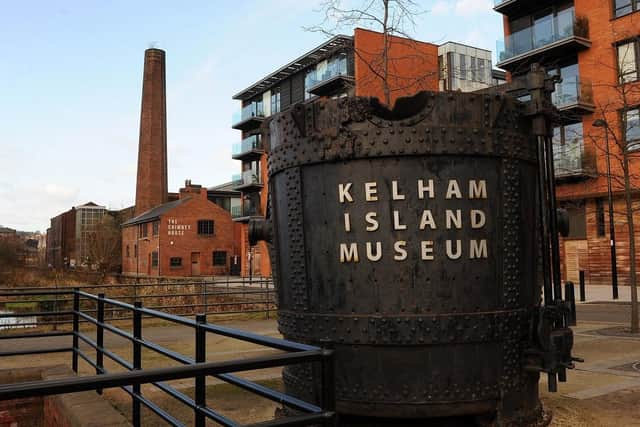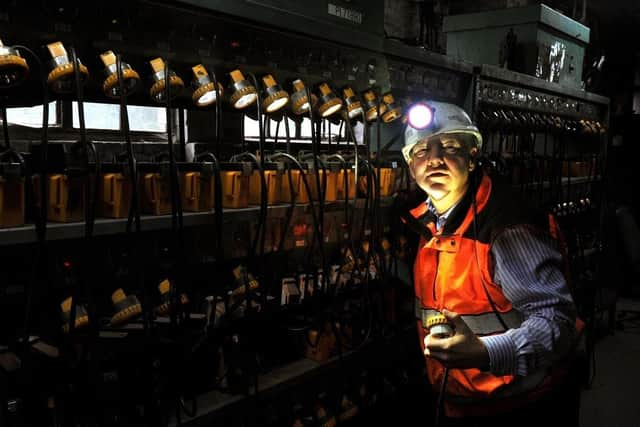Yorkshire tourist attractions part of European Route of Industrial Heritage including museums that tell the region’s Industrial Revolution history and coal mining history
The European Route of Industrial Heritage (ERIH) is a tourist path of the most important industrial heritage sites in Europe.
It is a tourism industry enterprise that provides a guide to various industrial heritage sites across the continent.
Advertisement
Hide AdAdvertisement
Hide AdThe goal is to generate appeal for the European heritage of the Industrialisation and its impact as well as to promote regions, towns and sites showing the industrial history .


Yorkshire tourist attractions part of the European Route of Industrial Heritage
The virtual main route is connected by the ‘Anchor Points’ – sites which are the most historically significant and most attractive for visitors.
The route leads through 13 countries as of 2014: UK, the Netherlands, Belgium, Poland, Germany, Spain, Sweden, France, Norway, Denmark, Czech Republic, Italy, Luxembourg and Portugal (in 2017).
National Coal Mining Museum


Coal mining had been carried out at Caphouse Colliery in Overton, near Wakefield, for centuries before it became the site for the National Coal Mining Museum for England.
Advertisement
Hide AdAdvertisement
Hide AdA plan dated 1791 showed workings being carried out from 1789 to 1795 and includes a shaft on the Caphouse site. It is thought to be the oldest coal-mine shaft still in everyday use in Britain to this day.
The Milnes family owned the colliery before 1827 and passed it onto the Lister Kaye family, who owned it until 1917.
It became a museum in 1988 and was granted national status in 1995. The museum is dedicated to educating visitors about the social and industrial history of mining. Visitors can experience the underground conditions miners worked in and observe the tools and machines they used.
Kelham Island Museum
Kelham Island Museum is operated by Sheffield Museums, an independent charity which operates five other museums and heritage sites: Abbeydale Industrial Hamlet, Graves Gallery, Millennium Gallery, Shepherd Wheel Workshop and Weston Park Museum.
Advertisement
Hide AdAdvertisement
Hide AdKelham Island Museum is located on one of the oldest industrial sites in Sheffield which was formed in the 1180s, when a gout or millrace was built to carry water from the River Don to the Town Corn Mill.
This museum is dedicated to preserving and sharing the history of Sheffield during the Industrial Revolution and features a vast photographic collection.
There is not much known about the site’s early history before 1637, when the town armourer, Kellam Homer set up a grinding workshop and waterwheel on the island.
Elsecar Heritage Centre
There was heavy industrial activity taking place in Elsecar from the early 18th century. The village and adjacent villages were stacked with collieries, ironworks, and other industrial concerns, and played a significant role in the economic development of the region.
Advertisement
Hide AdAdvertisement
Hide AdUnlike many other villages in the area, Elsecar was built by colliery owners to house their workers.
The Heritage Centre is the former foundry and colliery workshops of the Earl Fitzwilliam and was developed from the 1790s.
Saltaire
The village of Saltaire was built in 1851 by Sir Titus Salt, a renowned industrialist who moved five of his mills from Bradford to the site now known as Saltaire.
He founded the village to improve working conditions by building well-kept stone houses which were vast improvements from squalid and overpopulated areas in Bradford at the time.
Advertisement
Hide AdAdvertisement
Hide AdThere were wash-houses with tap houses, a hospital and institute for recreation and education and bath-houses added to the village along with a library, reading room, a concert hall, billiard room and a science laboratory.
At the time when Saltaire was built, it had 800 dwellings with 755 houses and 45 almshouses that housed 4,389 people.
Bradford-born David Hockney painted Salts Mill in warm earthy colours and both the painter and the place are famous all over the world.
Comment Guidelines
National World encourages reader discussion on our stories. User feedback, insights and back-and-forth exchanges add a rich layer of context to reporting. Please review our Community Guidelines before commenting.
